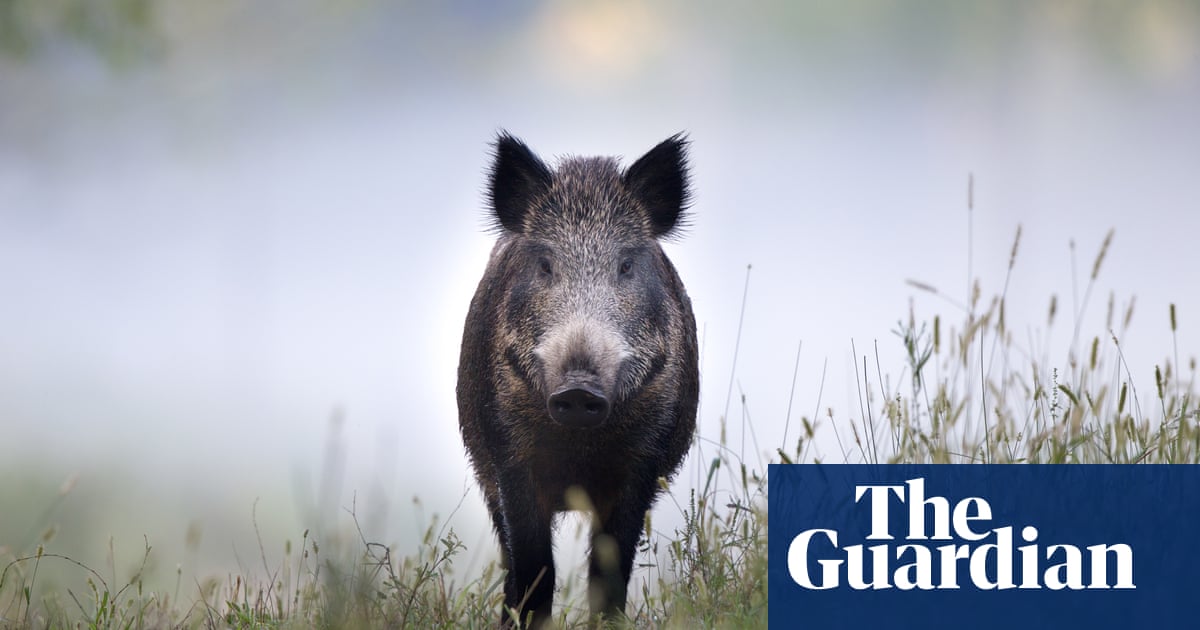Sightings of wild boar on Dartmoor have raised suspicions a guerrilla rewilder has been releasing them – and prompted a debate over whether they should be allowed to remain.
Videos of a group of boar on the moors in Devon were posted online earlier this month, and a dog walker has recently complained of a close encounter with one of them, which frightened his pet.
Experts suspect the boar could have been illegally reintroduced, possibly by people who want to repopulate the moors with the once indigenous species. Boar used to roam Dartmoor but were later hunted to extinction in Britain by the 17th century.
Matt Larsen-Daw, the CEO of the Mammal Society, said: “There is a possibility that the boar captured on video earlier in February, and the individual animal blamed for a recent attack on a dog, are present due to a more recent illegal release of animals in the landscape. Sightings of animals in daylight, and in an area that is fairly devoid of woodland, could suggest that these animals have been introduced suddenly and are unfamiliar with their new surroundings.”
It is also possible the animals migrated from other populations as there have been sighting of the wild pigs in Devon over the years. It is thought about 2,600 are now living wild across the UK, with the largest colony in the Forest of Dean. They are also present in parts of south-east and south-west England, south-east Wales and north-west Scotland.
Dog walker Richard Blight told Devon Live last week that a wild boar knocked his cocker spaniel over before chasing it down a path. He said anyone who had released the boar was a “bloody moron”, adding “I dread to think what would happen if a child were to come face to face with a boar on a path. Before this happened I would have said properly managed boar wouldn’t be a problem on Dartmoor. But not now. This is a national park and it can get very busy, especially in summer.”
But some think they should be allowed to stay, as they were once native to the UK.
Larsen-Daw said: “Boar are very adaptable and acclimatise very quickly. And it doesn’t need to be a straightforward ‘leave them be or kill them all’. The population could be closely managed to ensure they’re kept in a suitable population size, governed by the carrying capacity of the land available. That carrying capacity would be the key thing to ascertain through study and modelling.”
The Dartmoor national park authority (DNPA) has heard rumours of boar on the moors for some time, but they have not caused disturbances until now. The animals tend to be secretive and are primarily nocturnal, and mostly run away from humans when approached. Proponents of their return say they have a regenerative effect on the soil as they root through it, dispersing seeds with their sensitive snouts.
“As for human-wildlife conflict, the danger posed by wild boar is generally overstated,” said Larsen-Daw. “Their potential to cause harm due to their size and weight should be held up against the fact that they are secretive and non-aggressive except when provoked. Some education and sensitisation of visitors to an area with wild boar can ensure that conflict is avoided, and for some wildlife lovers the prospect of seeing wild boar or signs of their presence could enhance their enjoyment of a visit.”
after newsletter promotion
Natural England, the government’s nature watchdog, pointed out that boar were once native to Dartmoor, and said it was working closely with DNPA to provide advice and guidance. Its experts have said dogs should be kept on leads in areas where there are wild boar.
The Wildlife Trusts, who have reserves on Dartmoor, have been closely monitoring the situation. A spokesperson said people should keep dogs on leads on their reserves: “We are aware of reports of boar on Dartmoor national park and will be working with the Dartmoor national park authority and others over the coming weeks to understand more about any local population. As always, we recommend that visitors in the countryside keep dogs on a lead to safeguard livestock and to avoid nature disturbance. We ask that dogs are kept on a lead on our nature reserves.”
More evidence is needed before the return of boar to Dartmoor can be assessed as a positive or negative thing, Larsen-Daw added: “The fate of the wild boar on Dartmoor should not be a kneejerk response based on a black and white view of wild boar being good or bad in the modern UK landscape. The first step should be to ascertain what is happening and what it could mean for nature and people.”
Article by:Source: Helena Horton Environment reporter














